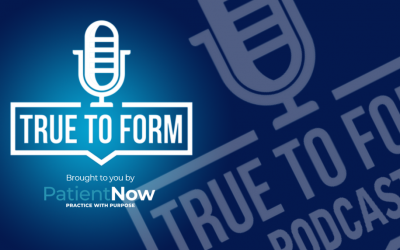How Payment Plans Can Help High Credit Score Patients and Patients Struggling Financially
You manage a medical office and wonder how you can help both financially-sound, high credit score patients and patients who may be struggling with money. .
The short answer is, “payment plans!” Let’s get right into it.
How Payment Plans Can Help Patients
Medical expenses can be overwhelming, especially when unexpected health issues arise or the desired treatment is not covered by insurance. In these situations, payment plans provide a financial solution to patients to be able to get the care they need. In addition to being an alternative payment method, payment plans provide other benefits such as:
Break Down Financial Barriers
Not everyone has the means to pay upfront, especially for a large bill, which is why payment plans help bridge this gap. It makes healthcare services more accessible, enabling patients to receive timely treatment without being deterred by financial constraints.
Enjoy Financial Flexibility
Payment plans such as Cherry’s provide qualifying 0% APR and terms up to 60 months. Even for patients who are financially sound, it makes sense to spread your payments out over time if you don’t have to pay interest to do so.
Being able to pay in installments instead of a large lump sum provides budget flexibility and can help manage other monthly obligations.
Mitigate Financial Stress
Medical financing helps reduce financial stress by providing a structured approach to managing expenses. Instead of grappling with a lump sum payment, patients can focus on getting the treatments they need knowing that they have a manageable payment schedule in place.
Encourage Preventive Care
It is common for many people to withhold medical care due to the expenses that follow. However, fear of prohibitive costs often deters individuals from seeking preventive services. Payment plans incentivize preventive care by making it more financially feasible. From routine dental work to eye exams, patients are more likely to prioritize preventive measures when they have a convenient payment option available.
Allow for “Non-Essential” Care
Payment plans are a great way to pay for “non-essential” care that is not covered by insurance. These are commonly cosmetic procedures, such as facelift, rhinoplasty, botox, fillers, etc. Imagine having to fork over hundreds or thousands of dollars upfront! A payment plan enables patients to spread that payment into smaller monthly amounts.
Patients With Debt or Considering Bankruptcy
What about patients with heavy debt or are considering bankruptcy?
For individuals burdened with overwhelming medical debt, they often take a bankruptcy quiz to help them understand if they should file for bankruptcy. Bankruptcy can be one of the ways to get out of any crippling debt that may weigh them down.
For people facing heavy debt, considering bankruptcy can offer a path to financial relief and a fresh start. Medical expenses can quickly spiral out of control, leaving patients overwhelmed with insurmountable bills and facing dire financial consequences. Bankruptcy provides a legal mechanism to discharge or restructure debts, offering people the opportunity to regain control of their finances and rebuild their lives.
Therefore, it’s important to understand how personal bankruptcy works as a first step for someone who is contemplating whether they should file Chapter 7 or Chapter 13 bankruptcy, which are the most commonly known forms of bankruptcy.
Based on a recent bankruptcy statistics study from Ascend, using over 174,035 anonymous data points pulled from their calculators, over 5% of the U.S. population have filed for bankruptcy due to their medical expenses being at an all-time high.
The cost to file for bankruptcy is not a one-size-fits-all, especially when it comes to Chapter 13, but it’s important to keep in mind the fees that are tied to filing Chapter 7 or Chapter 13 bankruptcy.
